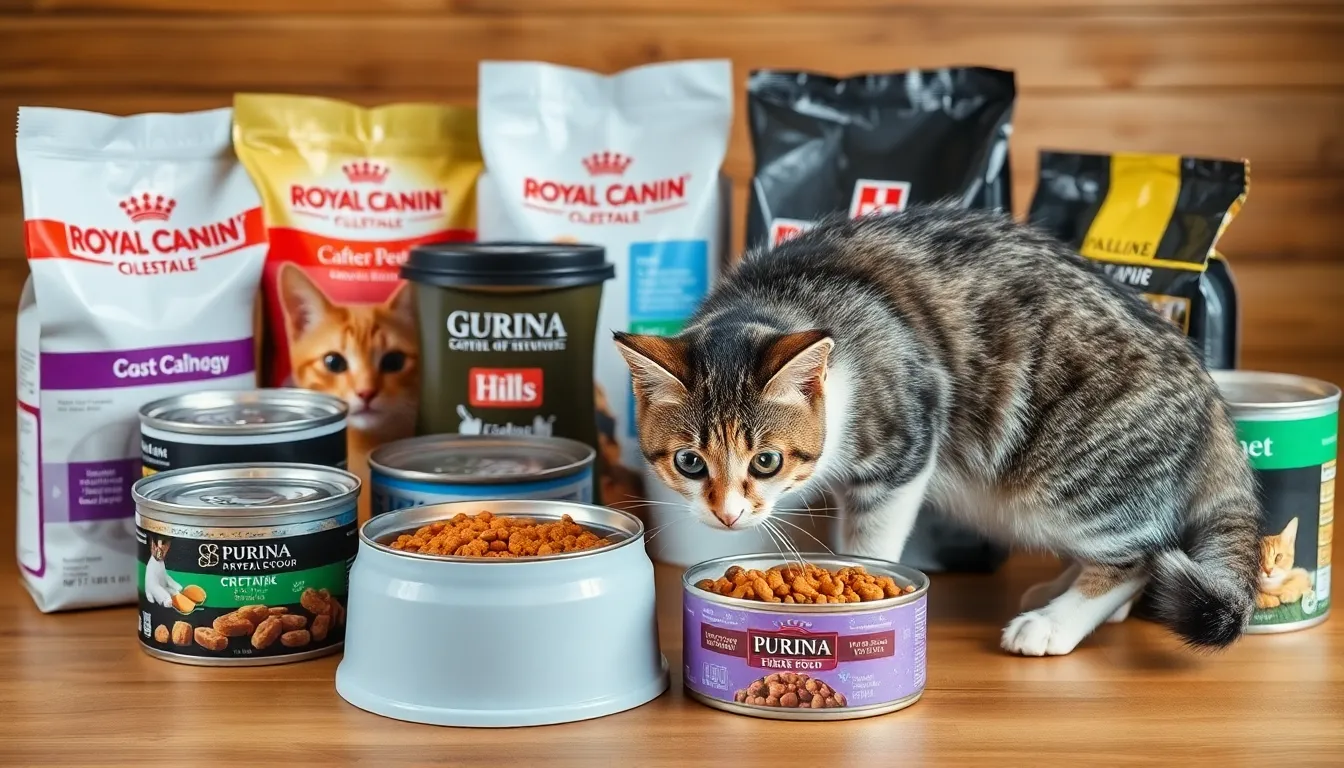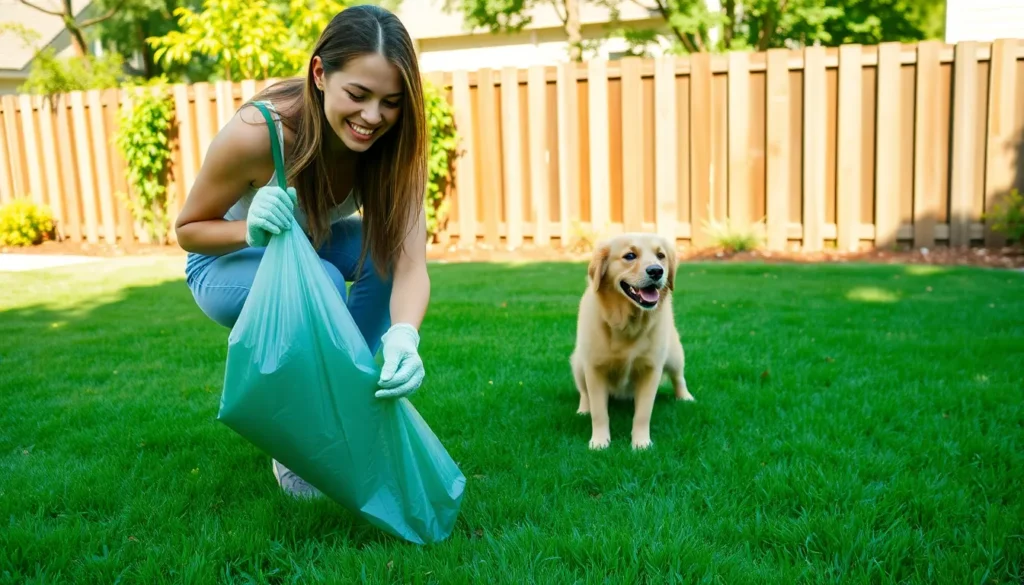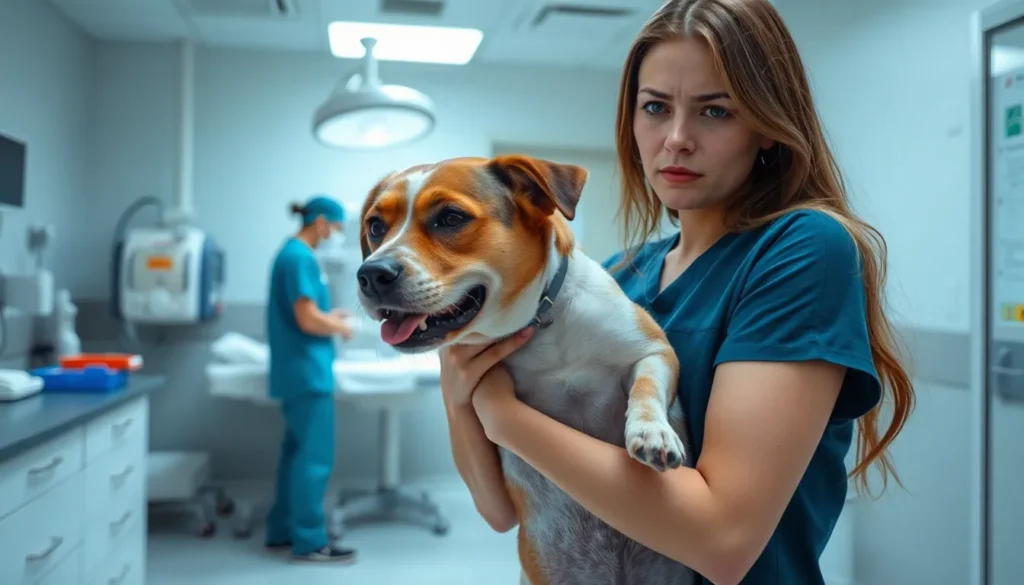Keeping a cat healthy often involves managing their weight. With obesity on the rise among pets, finding the right food can make all the difference. Cat weight loss food is specifically formulated to help felines shed those extra pounds while still enjoying their meals.
These specially designed diets not only reduce calorie intake but also ensure that cats receive essential nutrients. The right food can improve energy levels, enhance mobility, and boost overall health. Understanding the options available can empower pet owners to make informed choices for their furry friends, leading to happier and healthier lives.
Table of Contents
ToggleOverview of Cat Weight Loss Food
Cat weight loss food plays a significant role in managing feline obesity by offering a balanced diet that encourages gradual weight loss while supplying essential nutrients. Proper nutrition leads to enhanced energy levels and overall health for cats.
Importance of Weight Management
Weight management is crucial for maintaining a cat’s health and longevity. Excess weight strains joints, complicates mobility, and increases the risk of diabetes and heart disease. An appropriate diet enables cats to achieve a healthy weight, promoting active lifestyles and reducing the likelihood of obesity-related complications.
Common Health Issues in Overweight Cats
Overweight cats face various health issues, including:
- Diabetes mellitus: High body weight leads to insulin resistance, increasing diabetes risk.
- Arthritis: Extra weight exerts pressure on joints, causing pain and discomfort.
- Hypertension: Obesity can contribute to elevated blood pressure, affecting overall health.
- Urinary tract problems: Overweight cats are more susceptible to urinary diseases due to concentrated urine.
- Heart disease: Increased fat levels elevate the risk of cardiac issues, including congestive heart failure.
Identifying and addressing these health concerns through weight management can significantly improve a cat’s quality of life.
Types of Cat Weight Loss Food

Selecting the right type of weight loss food for cats is crucial in promoting healthy weight management. Two primary options are available: dry cat food and wet cat food.
Dry Cat Food Options
Dry cat food, or kibble, often contains higher fiber content to help cats feel full. Common formulations feature reduced fat percentages and are specifically designed for weight control. Many brands incorporate protein sources like chicken or fish to support muscle mass during weight loss. Example options include:
- Royal Canin Veterinary Diet Feline Satiety: Provides a balanced formula with enhanced fiber.
- Hill’s Prescription Diet Metabolic: Contains a unique blend of ingredients to control hunger.
- Purina Pro Plan Veterinary Diets OM: Focuses on protein for muscle retention while promoting weight loss.
These diets often come in controlled portion sizes, making it easier for pet owners to manage caloric intake.
Wet Cat Food Options
Wet cat food, or canned food, tends to have a higher moisture content, which can help with hydration. These options usually contain fewer calories per serving but deliver essential vitamins and minerals. Examples of wet cat food options include:
- Hill’s Prescription Diet Metabolic Feline: Tailored for weight management with a palatable formula.
- Royal Canin Veterinary Diet Feline Weight Care: Offers a balanced wet formula with reduced calories and fat.
- Wellness CORE Grain-Free: Provides a protein-rich meal to aid in weight loss while maintaining nutrition.
Wet food can also enhance a cat’s overall dietary intake by promoting satiety and reducing food cravings throughout the day.
Key Ingredients to Look For
When selecting cat weight loss food, the right ingredients play a vital role in achieving effective weight management. Focus on formulas that contain high protein, low carbohydrates, and added fiber to support a cat’s health during weight loss.
High Protein Content
High protein content supports muscle maintenance while promoting fat loss. Cats require protein for energy and to preserve lean muscle mass. Ingredients like chicken, turkey, and fish provide a robust protein source. Foods with at least 30% protein help cats feel satisfied longer, which curbs excessive eating and encourages healthy weight reduction.
Low Carbohydrate Formulas
Low carbohydrate formulas help manage a cat’s insulin levels and promote fat burning. Many commercial cat foods contain high levels of carbohydrates, which can lead to weight gain. Select options that limit carbohydrate percentages to around 10% or less. Ingredients like peas and lentils serve as better alternatives to starchy fillers, ensuring a balanced diet without unnecessary carbs.
Added Fiber Sources
Added fiber sources enhance satiety and improve digestive health. Fiber slows down digestion, which helps cats feel fuller for longer periods, reducing the urge to snack between meals. Look for ingredients such as beet pulp, psyllium, and cellulose, which contribute to a cat’s daily fiber intake. Aim for foods that contain around 10% fiber to effectively support weight management efforts.
Brand Recommendations
Several brands offer effective cat weight loss food that meets nutritional needs while assisting in weight management. Here are some popular brands and a comparison of their nutritional profiles.
Popular Brands Reviewed
- Royal Canin Veterinary Diet Feline Satiety
- Formulated for weight loss, this dry food contains a high fiber content to promote fullness. It offers balanced nutrition, helping cats lose weight safely.
- Hill’s Prescription Diet Metabolic
- Available in both dry and wet forms. This diet enhances metabolism and fat burning through specific nutrient composition while maintaining muscle mass.
- Purina Pro Plan Veterinary Diets OM
- Aimed at weight management, this food comprises a blend of protein and fiber to keep cats feeling satisfied while losing weight.
- Blue Buffalo Wilderness Weight Control
- This grain-free option emphasizes high protein and low carbohydrates, designed to support healthy weight loss without sacrificing taste.
- Wellness CORE Grain-Free
- Another grain-free option, this formula includes protein-rich ingredients and lower fat levels, helping cats achieve and maintain a healthy weight.
Nutritional Analysis Comparison
| Brand | Protein (%) | Fat (%) | Fiber (%) | Carbohydrates (%) |
|---|---|---|---|---|
| Royal Canin Veterinary Diet Feline Satiety | 31 | 9 | 14 | 10 |
| Hill’s Prescription Diet Metabolic | 30 | 9 | 12 | 10 |
| Purina Pro Plan Veterinary Diets OM | 37 | 12 | 15 | 7 |
| Blue Buffalo Wilderness Weight Control | 34 | 10 | 10 | 6 |
| Wellness CORE Grain-Free | 38 | 15 | 8 | 7 |
These brands provide options catering to cats’ health needs while assisting in weight management. Selecting a diet with sufficient protein, low fat, and high fiber promotes effective weight loss while ensuring nutritional adequacy.
Tips for Transitioning Your Cat
Transitioning a cat to weight loss food requires careful planning and observation to ensure a smooth adjustment and effective weight management.
Gradual Food Introduction
Introducing weight loss food gradually minimizes digestive upset. Mix a small amount of the new food with the current diet, slowly increasing the new food ratio over 7 to 10 days. For instance, start with 75% old food and 25% new food, and then shift to 50% both, followed by 25% old and 75% new. This transition helps the cat adapt to the new taste and texture, making it more likely to accept the diet change.
Monitoring Weight Changes
Regularly monitoring a cat’s weight supports effective weight management. Weigh the cat weekly using a reliable scale. Track changes to assess progress towards weight loss goals. A safe weight loss target is 1% to 2% of the cat’s body weight per week. If weight loss stalls or if there are concerns, consult a veterinarian for further guidance. Adjustments to the diet or feeding routine may be necessary to achieve desired outcomes.
Choosing the right cat weight loss food is essential for promoting a healthier lifestyle for felines. By prioritizing high protein and low carbohydrate options pet owners can help their cats achieve and maintain a healthy weight. This not only enhances energy levels and mobility but also reduces the risk of serious health issues.
Regular monitoring and gradual transitions to new diets can make a significant difference in a cat’s weight management journey. With the right food and a little patience pet owners can ensure their beloved companions lead longer happier lives. Investing in quality weight loss food is a step towards a healthier future for any cat.








